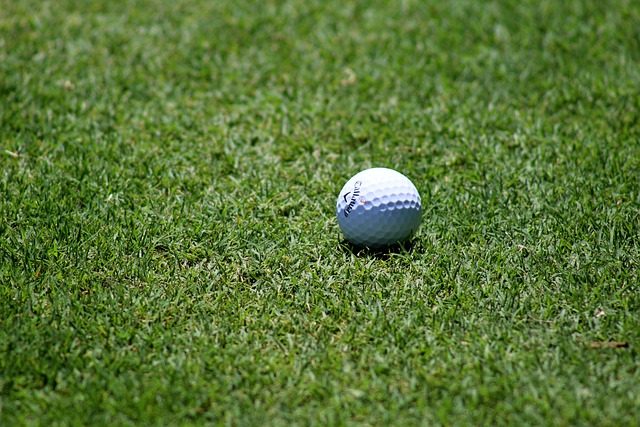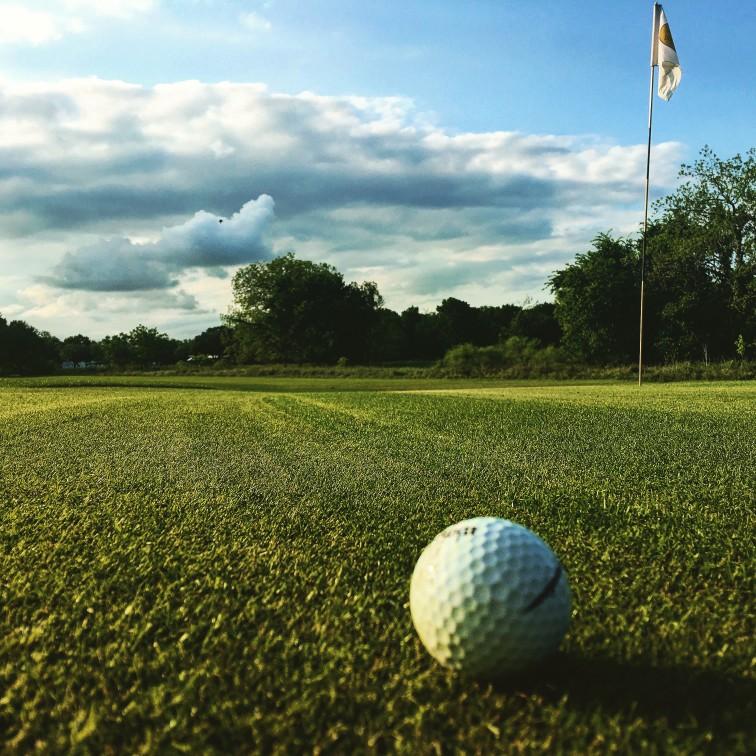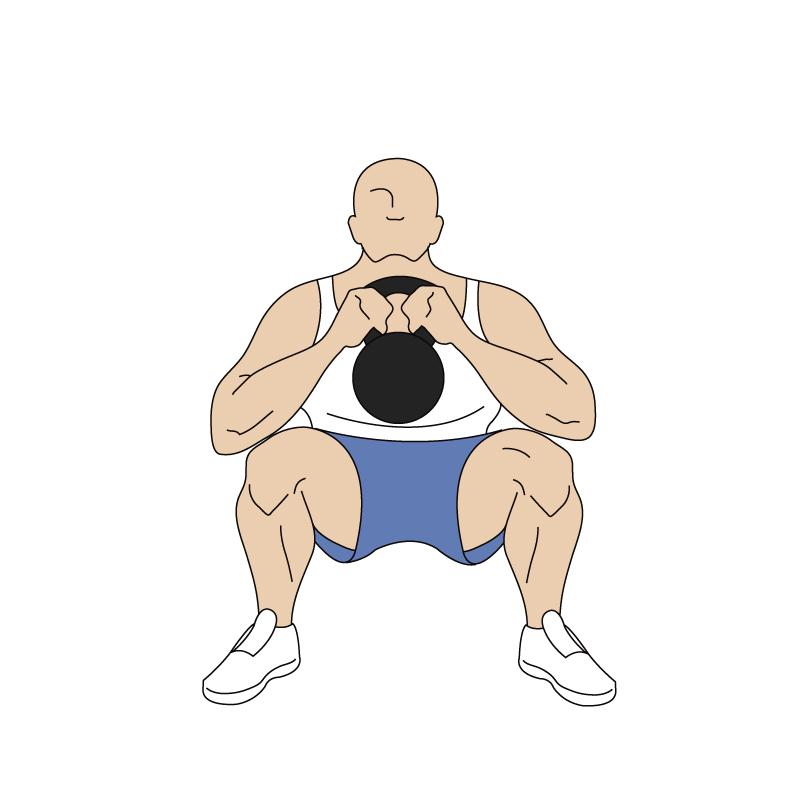Golf is a sport that can be enjoyed by players of any age, from children to senior citizens. While it is a great way to stay active and be outdoors, golf can also cause some serious injuries if proper precautions are not taken.
Common golf injuries occur due to overuse or incorrect techniques and form. In order to reduce the risk of injury and keep playing golf for years to come, it is important to understand the different types of common golf injuries and their prevention and recovery strategies.
Introduction
One of the most common golf injuries is tendinitis, which is inflammation of a tendon due to overuse. This condition is usually caused by repetitive motions and can be felt in the arms, wrists, and elbows. If not treated, it can lead to further deterioration of the tendon and joint. Joint pain is another common golf injury that occurs when the muscles surrounding the joint become stressed. This type of pain is usually caused by incorrect technique, improper form, or overuse.
Muscle strains are also common in golfers, especially in the back, shoulder, and hip muscles. This type of injury occurs when a muscle is overstretched or torn due to incorrect movements or overuse. Repetitive motion injuries are caused by the repetitive use of a muscle or joint and can lead to pain and stiffness. Shoulder injuries are also common in golfers and can be caused by poor form, incorrect technique, or overuse. Wrist and elbow injuries are also often seen in golfers, which can be caused by incorrect swing technique or overuse of the joint.
In order to reduce the risk of these common golf injuries, it is important to take the necessary precautions. Warm-up exercises, core strengthening exercises, and proper stretching are essential parts of any golfers’ pre-game routine. Training with proper technique and form is also essential in order to prevent injury. Additionally, using the right equipment such as clubs, gloves, and golf balls can help reduce the risk of injury. Regular breaks throughout your game and staying hydrated are also important in preventing injury.
Finally, recovering from a golf injury and getting back on the course is just as important as preventing them in the first place. Resting the affected area, icing, compression, and elevation are some of the most common recovery methods. Physical therapy and alternative therapies are also beneficial in the recovery process. Adequate nutrition and hydration are also important for complete recovery.
It is also essential to understand the importance of ergonomic considerations in order to reduce the risk of injury. Proper alignment, a comfortable grip, proper posture, and maintaining proper body mechanics are all important factors in preventing injury. Additionally, having a positive attitude, setting realistic goals, pacing yourself, and incorporating visualization and relaxation techniques into your game can all help you stay safe and injury-free.
By understanding the common golf injuries, their prevention strategies, recovery strategies, and ergonomic considerations, golfers can ensure that they are keeping themselves safe and injury-free. This comprehensive guide will provide an in-depth look at common golf injuries, their prevention and recovery strategies, and ergonomic considerations.
Understanding Common Golf Injuries
Golf is a physical sport that can cause a variety of musculoskeletal injuries. Understanding common golf injuries and how to prevent or recover from them is essential to any golfer’s long-term success and enjoyment.
Tendinitis: Tendinitis is a condition that often affects golfers due to the repetitive motions associated with the sport. It can affect the elbows, wrists, shoulders, hips, and knees, and is characterized by inflammation, soreness, and pain. In order to prevent tendonitis, golfer’s should make sure they take breaks in between shots, warm up properly, and use proper technique and form. For recovery, rest, ice, compression, elevation, and physical therapy may all be beneficial.
Joint Pain: Joint pain is a common injury among golfers due to the repetitive motions of the game. It can affect any joint in the body, including the wrists, elbows, and shoulders. To prevent joint pain, golfers should focus on strengthening the core and muscles surrounding the joints, as well as using proper technique and form. Rest, ice, physical therapy, and alternative therapies like massage and acupuncture may be helpful for recovery.
Muscle Strains: Muscle strains are a common golf injury that can occur due to the repetitive motions associated with the game. They can affect the muscles in the arms, legs, and back. Golfers should focus on proper stretching, warm-up exercises, and correct technique and form in order to prevent muscle strain. To recover from a muscle strain, rest, ice, compression, and elevation are all beneficial.
Repetitive Motion Injuries: Repetitive motion injuries are common among golfers due to the repetitive nature of the sport. To prevent these injuries, golfers should be mindful of their technique and form, as well as make sure to take frequent breaks and use proper equipment. For recovery, rest, ice, and physical therapy can all be beneficial.
Shoulder Injuries: Shoulder injuries are common among golfers due to the rotational nature of the swing. To prevent shoulder injuries, golfers should focus on strengthening the core, shoulder muscles, and arm muscles. Rest, ice, compression, elevation, physical therapy, and alternative therapies like massage and acupuncture can all be beneficial for recovery.
Wrist and Elbow Injuries: Wrist and elbow injuries are common among golfers due to the repetitive motions of the swing. To prevent these injuries, golfers should focus on strengthening the muscles in the arms and wrists, as well as using proper technique and form. To recover from a wrist or elbow injury, rest, ice, compression, elevation, and physical therapy may all be beneficial.

Prevention Strategies
When it comes to preventing common golf injuries, there are a number of strategies you can use to stay safe on the course. Warm-up exercises can help to prepare your body for the game, while core strengthening exercises can help you to avoid overworking your muscles and tendons. Furthermore, proper stretching and the use of correct technique and form are also important aspects of injury prevention.
Warm-up exercises are a great way to prepare your body for any activity. Before heading out for a round of golf, it is important to adequately warm up your muscles, joints, and tendons to reduce the risk of injuries. This can be done with dynamic stretching exercises and light jogging or walking. Start slowly and gradually increase the intensity of your warm-up as your body becomes more prepared for the activity.
In addition to warm-up exercises, core strengthening exercises can also help to reduce the risk of injuries. Strengthening your core can help to improve your balance, coordination, and form. Core exercises such as planks and bridges are great options to help you stay injury-free.
Proper stretching is another important aspect of injury prevention. After your warm-up, it is important to stretch the key muscle groups that will be used during golf. Focus on stretching your hips, back, and shoulders to help reduce the risk of muscle strains. Additionally, it is important to make sure that you use the correct technique and form when swinging the club. In order to properly execute a golf swing, it is important to maintain a correct posture and use proper body mechanics.
Finally, using the proper equipment is also important when it comes to preventing golf injuries. Make sure that you are using clubs that are the correct size and weight for you. Additionally, it is important to take regular breaks throughout your game to help rest your muscles and prevent fatigue. Furthermore, it is important to stay hydrated throughout the day as dehydration can increase the risk of injuries.
By following these preventative strategies, you can help to reduce your risk of common golf injuries. Warm-up exercises, core strengthening exercises, proper stretching, correct technique and form, proper equipment, taking breaks, and staying hydrated are all important aspects of injury prevention. Following these guidelines can help to ensure your safety while on the course.
Recovery Strategies
Recovery from golf injuries is essential for a successful return to the game. While prevention strategies are important for avoiding injuries, it is equally important to have a plan for effective recovery when an injury does occur.
Rest is the cornerstone of recovery from most golf injuries. Rest allows the body to heal while limiting further damage. Initially, complete rest may be required to allow the injury to heal. As the injury heals, some activity can be added back in with restrictions, such as limited practice swings or modified golf games. It is important to listen to the body and follow a doctor’s advice when returning to the game.
Ice is another important component of recovery. Ice helps reduce inflammation and pain. To get the most benefit from icing, it should be done for about 15-20 minutes at a time and can be done every few hours throughout the day.
Compression can also be helpful in recovery from golf injuries. Compression helps to reduce pain and decrease swelling. Compression can be applied with a bandage, such as an elastic wrap. It is important to not wrap too tightly, as it can cause more damage, but wrapping snugly can help.
Elevation can also help in the recovery process. Elevation helps to reduce swelling and pressure on the area. It also helps in reducing pain. Elevation can be done by raising the injured area above the level of the heart.
Physical therapy is another important part of recovery from golf injuries. Physical therapy can help to improve strength and range of motion, as well as help to reduce pain and swelling. Physical therapists can also provide guidance on how to perform exercises correctly and safely.
Alternative therapies, such as acupuncture, chiropractic care, and massage, can also be helpful in recovery from golf injuries. These treatments may help to reduce pain and improve mobility. It is important to consult with a doctor to determine the best treatment options for each individual.
Adequate nutrition is also important in the recovery from golf injuries. Eating enough protein and getting enough vitamins and minerals helps to ensure that the body has the necessary nutrients for healing. It is also important to stay properly hydrated.
The recovery process for golf injuries can be a long road, but with proper rest, icing, compression, and elevation, the body can heal and the athlete can return to the game. Alternative therapies, physical therapy, and proper nutrition can all help in the recovery process. Taking the time to understand the injury and create an effective recovery plan can be beneficial for athletes looking to get back on the course.
Ergonomic Considerations
Proper ergonomics is essential for preventing and recovering from common golf injuries. Ergonomics is the science of fitting the job to the worker, and in the case of golf, it involves taking the time to make sure the body is properly aligned, the grip is comfortable and the posture is correct. By doing so, an individual can ensure that the body is functioning optimally and reduce the risk of developing an injury.
The first step in proper ergonomic consideration is proper alignment. The spine should be in a neutral position, not flexed or extended, and the head should be in line with the spine. The feet should be shoulder width apart and parallel, with the weight evenly distributed between both feet. The arms should be held close to the body and near the centerline of the body.
The grip should be comfortable and not cause excessive tension in the hands, wrists, or arms. It should be just enough to keep the club in place without having to grip too tightly. The grip should also be balanced so that the club is in the middle of the hands, and the angle between the hands should be open.
Posture is also an important aspect of ergonomics. The spine should be kept straight, not overly arched or rounded, and the knees should be slightly bent. The hips and shoulders should be in line with each other, and the arms should remain close to the body.
Another important aspect of proper ergonomic considerations is body mechanics. This includes the use of proper body movement to perform the golf swing. The swing should be fluid and smooth, not jerky or abrupt, and the body should be used in the most efficient way possible to maximize the power and accuracy of the swing.
Finally, proper body mechanics also includes the use of proper posture throughout the swing. The spine should remain in a neutral position and the head should be kept in line with the spine. The legs should be slightly bent and the arms should be kept close to the body to ensure proper weight transfer throughout the swing.
By following proper ergonomics, individuals can reduce the risk of developing common golf injuries. Proper alignment, comfortable grip, proper posture, and proper body mechanics are all essential aspects of ergonomic considerations that can help ensure a safe and effective game of golf.

Mental Strategies
It’s no secret that golfers need to remain mentally sharp when on the course. Positive thinking and proper goal-setting can go a long way in preventing golf-related injuries. By setting achievable goals and maintaining a positive attitude, golfers can help keep their bodies in top condition.
Visualization is also an important mental tool for golfers. By picturing a successful shot before it is taken, golfers can help avoid the anxiety and frustration that can lead to injuries. Visualizing how you want the ball to move can help you execute the shot more accurately.
Relaxation techniques can also help golfers prevent injuries. Taking deep breaths and focusing on the breath can help golfers remain calm and relaxed during the game. When a golfer is tense or stressed, they are more likely to make mistakes and injure themselves.
Good pacing is also important for preventing golf injuries. Golfers should not try to rush through their shots, as this can cause them to lose control and make bad decisions. Taking time to plan and evaluate each shot can help golfers maintain a relaxed and consistent pace.
In addition, it is important for golfers to take regular breaks throughout the game. This can help them avoid fatigue, which can lead to improper technique and ultimately, injuries. Breaks should be taken after every few holes, or after an extended period of play.
Mental strategies can be just as important as physical ones in preventing golf injuries. By setting achievable goals, maintaining a positive attitude, visualizing successful shots, using relaxation techniques, and pacing themselves, golfers can improve their game and reduce the likelihood of suffering a golf injury.
Conclusion
Golf is a beloved and exciting sport that millions of people around the world enjoy. It can be very rewarding and enjoyable, but it can also come with risks. Common golf injuries can be a result of poor technique, inadequate preparation, improper equipment, or other factors. It is important to be aware of the potential risks and take proactive steps to prevent and treat these injuries.
First and foremost, it is important to understand the most common golf injuries. Tendinitis, joint pain, muscle strains, repetitive motion injuries, shoulder injuries, and wrist and elbow injuries are all common in golfers. It is important to be aware of the symptoms and signs of these injuries so that proper treatment can be sought.
Prevention is the best medicine when it comes to golf injuries. Warm-up exercises, core strengthening exercises, proper stretching, correct technique and form, proper equipment, taking breaks, and hydration are all key components of an effective prevention strategy. It is also important to take ergonomic considerations into account. Keeping proper alignment, having a comfortable grip, maintaining proper posture, and using proper body mechanics are all important for preventing injuries.
When it comes to recovery, rest, ice, compression, elevation, physical therapy, alternative therapies, and adequate nutrition are all key elements. It is also important to incorporate positive mental strategies such as having a positive attitude, setting proper goals, pacing oneself, visualization, and relaxation techniques.
In summary, common golf injuries can be prevented and treated with a comprehensive approach that involves understanding the most common injuries, taking preventive measures, and utilizing recovery strategies. Ergonomic considerations and positive mental strategies are also essential components of an effective plan. Following these strategies can help golfers stay healthy and injury-free while enjoying the many rewards that golf has to offer.


